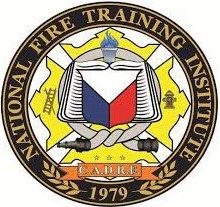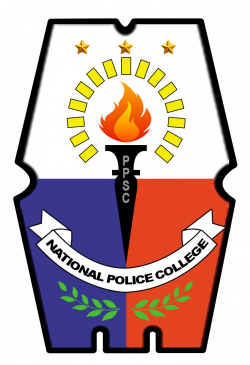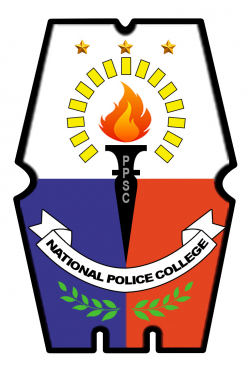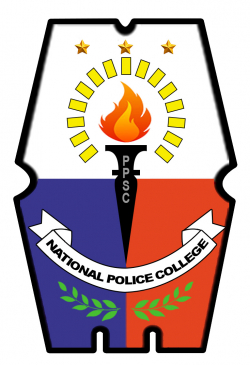ENHANCEMENT IN THE CREATION OF COMMUNITY FIRE AUXILIARY GROUP (CFAG) IN SITIO PALANAS BRGY. VASRA QUEZON CITY
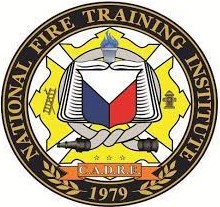
Type
Thesis
Category
Research
[ Browse Items ]
Publication Year
2024
Subject
Research
Abstract
The creation of a Community Fire Auxiliary Group can have several important
benefits for the community: Increased preparedness - By working together, the group can
help community members become better prepared for fire emergencies. This can include
providing fire safety education and training, organizing drills and exercises, and helping
residents develop emergency plans. Faster emergency response: In the event of a fire
emergency, the Community Fire Auxiliary Group can provide support to local fire
departments. This can include assisting with evacuation efforts, providing first aid, and
helping to contain the fire.
The study aimed to: 1) describe the level of awareness in the implementation of
the Community Fire Auxiliary Group (CFAG) in Sitio Palanas, 2) identify the factors that
affect the creation and implementation of Community Fire Auxiliary Group (CFAG) in
Sitio Palanas 3) determine the challenges encountered in the creation and implementation
of Community Fire Auxiliary Group (CFAG).
The study utilized descriptive quantitative method. A survey questionnaire was
also utilized in the conduct of this study, with a total of 20 residents of Sitio Palanas.
The respondents are highly aware of the creation of the CFAG in Sitio Palanas, as
indicated by the strongly agree responses. This high level of awareness can be a positive
factor in the successful implementation and operation of the CFAG, as it suggests that
there is a strong interest and willingness among the community to participate in the
program. However, it is important to note that awareness alone may not be enough to
ensure the effectiveness of the CFAG, and that addressing other challenges, such as
recruitment and retention of volunteers, will be crucial in achieving the desired outcomes.
1
There are significant challenges that affect the creation and implementation of
CFAG. The respondents strongly agree that there is a lack of awareness regarding the
programs for CFAG, which is the highest score at 3.9. This suggests that efforts should
be made to increase awareness of the CFAG and its programs to encourage more
community members to participate. It is evident that the creation and implementation of a
CFAG may encounter several challenges. The highest weighted mean indicates that some
residents may expect more support from the fire station, which may require additional
efforts from the CFAG to provide the necessary assistance. Other challenges encountered
include unresponsive residents due to the absence of allowances and uncooperative
barangay officials during seminars and training sessions. These challenges may affect the
effectiveness of the CFAG and limit the involvement of the community in the program.
Therefore, it is crucial to address these challenges to improve the overall performance of
the CFAG and promote community participation in emergency response activities.
To address the challenge of recruitment and retention of volunteers, it is
imperative to develop a comprehensive outreach and engagement strategy. This strategy
could involve working closely with community leaders and stakeholders to raise
awareness of the benefits of participating in the CFAG program, and to address any
concerns or questions that potential volunteers may have. Additionally, the fire station
could consider offering incentives or rewards for volunteers, such as training
opportunities or recognition for their service, to help attract and retain participants.
Finally, it may be helpful to establish regular communication channels and opportunities
for feedback and input from CFAG members, in order to ensure that their needs and
1
concerns are being heard and addressed, and to build a sense of community and
ownership around the program.
To address the lack of awareness among the community members about the
CFAG program and its activities, one of the best possible ways is to conduct information
campaigns and outreach programs. The local fire station personnel, together with the
barangay officials, can organize seminars and workshops to educate the community about
the importance of CFAG in fire prevention and response. The information campaigns can
be conducted in different forms, such as posters, flyers, and social media posts, to reach a
wider audience. It is also important to emphasize the benefits and incentives of becoming
a CFAG member, such as acquiring new skills, contributing to the community's safety,
and being part of a team that can provide support during emergencies. By increasing
awareness and addressing the challenges that affect the creation and implementation of
CFAG, the community can work together to achieve a safer and more resilient
community.
Improve communication and collaboration between CFAG of Sitio Palanas, local
fire station, and the community. This can be done through regular meetings, training, and
seminars to increase awareness and understanding of the program, its objectives, and the
roles and responsibilities of each stakeholder. The CFAG can also provide incentives or
allowances for members to encourage participation and commitment. To address the
challenge of unresponsive residents, the CFAG can also conduct outreach activities to
educate and inform the community about the benefits of the program and the importance
of their involvement in emergency response activities. Moreover, it may be beneficial to
1
involve community leaders and barangay officials in the CFAG program to promote their
cooperation and support.
benefits for the community: Increased preparedness - By working together, the group can
help community members become better prepared for fire emergencies. This can include
providing fire safety education and training, organizing drills and exercises, and helping
residents develop emergency plans. Faster emergency response: In the event of a fire
emergency, the Community Fire Auxiliary Group can provide support to local fire
departments. This can include assisting with evacuation efforts, providing first aid, and
helping to contain the fire.
The study aimed to: 1) describe the level of awareness in the implementation of
the Community Fire Auxiliary Group (CFAG) in Sitio Palanas, 2) identify the factors that
affect the creation and implementation of Community Fire Auxiliary Group (CFAG) in
Sitio Palanas 3) determine the challenges encountered in the creation and implementation
of Community Fire Auxiliary Group (CFAG).
The study utilized descriptive quantitative method. A survey questionnaire was
also utilized in the conduct of this study, with a total of 20 residents of Sitio Palanas.
The respondents are highly aware of the creation of the CFAG in Sitio Palanas, as
indicated by the strongly agree responses. This high level of awareness can be a positive
factor in the successful implementation and operation of the CFAG, as it suggests that
there is a strong interest and willingness among the community to participate in the
program. However, it is important to note that awareness alone may not be enough to
ensure the effectiveness of the CFAG, and that addressing other challenges, such as
recruitment and retention of volunteers, will be crucial in achieving the desired outcomes.
1
There are significant challenges that affect the creation and implementation of
CFAG. The respondents strongly agree that there is a lack of awareness regarding the
programs for CFAG, which is the highest score at 3.9. This suggests that efforts should
be made to increase awareness of the CFAG and its programs to encourage more
community members to participate. It is evident that the creation and implementation of a
CFAG may encounter several challenges. The highest weighted mean indicates that some
residents may expect more support from the fire station, which may require additional
efforts from the CFAG to provide the necessary assistance. Other challenges encountered
include unresponsive residents due to the absence of allowances and uncooperative
barangay officials during seminars and training sessions. These challenges may affect the
effectiveness of the CFAG and limit the involvement of the community in the program.
Therefore, it is crucial to address these challenges to improve the overall performance of
the CFAG and promote community participation in emergency response activities.
To address the challenge of recruitment and retention of volunteers, it is
imperative to develop a comprehensive outreach and engagement strategy. This strategy
could involve working closely with community leaders and stakeholders to raise
awareness of the benefits of participating in the CFAG program, and to address any
concerns or questions that potential volunteers may have. Additionally, the fire station
could consider offering incentives or rewards for volunteers, such as training
opportunities or recognition for their service, to help attract and retain participants.
Finally, it may be helpful to establish regular communication channels and opportunities
for feedback and input from CFAG members, in order to ensure that their needs and
1
concerns are being heard and addressed, and to build a sense of community and
ownership around the program.
To address the lack of awareness among the community members about the
CFAG program and its activities, one of the best possible ways is to conduct information
campaigns and outreach programs. The local fire station personnel, together with the
barangay officials, can organize seminars and workshops to educate the community about
the importance of CFAG in fire prevention and response. The information campaigns can
be conducted in different forms, such as posters, flyers, and social media posts, to reach a
wider audience. It is also important to emphasize the benefits and incentives of becoming
a CFAG member, such as acquiring new skills, contributing to the community's safety,
and being part of a team that can provide support during emergencies. By increasing
awareness and addressing the challenges that affect the creation and implementation of
CFAG, the community can work together to achieve a safer and more resilient
community.
Improve communication and collaboration between CFAG of Sitio Palanas, local
fire station, and the community. This can be done through regular meetings, training, and
seminars to increase awareness and understanding of the program, its objectives, and the
roles and responsibilities of each stakeholder. The CFAG can also provide incentives or
allowances for members to encourage participation and commitment. To address the
challenge of unresponsive residents, the CFAG can also conduct outreach activities to
educate and inform the community about the benefits of the program and the importance
of their involvement in emergency response activities. Moreover, it may be beneficial to
1
involve community leaders and barangay officials in the CFAG program to promote their
cooperation and support.
Number of Copies
1
| Library | Accession No | Call No | Copy No | Edition | Location | Availability |
|---|---|---|---|---|---|---|
| NFTI Library | 676599 | 1 | Yes |
